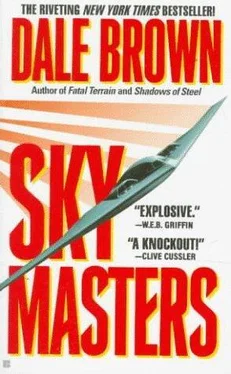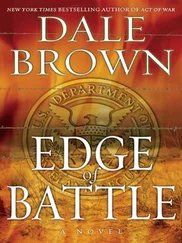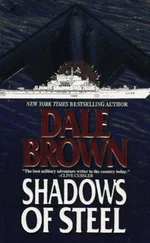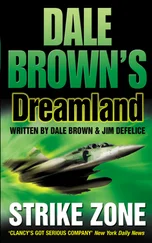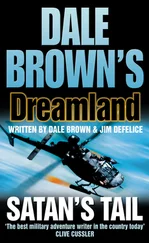Dale Brown - Sky Masters
Здесь есть возможность читать онлайн «Dale Brown - Sky Masters» весь текст электронной книги совершенно бесплатно (целиком полную версию без сокращений). В некоторых случаях можно слушать аудио, скачать через торрент в формате fb2 и присутствует краткое содержание. Жанр: Старинная литература, на английском языке. Описание произведения, (предисловие) а так же отзывы посетителей доступны на портале библиотеки ЛибКат.
- Название:Sky Masters
- Автор:
- Жанр:
- Год:неизвестен
- ISBN:нет данных
- Рейтинг книги:4 / 5. Голосов: 1
-
Избранное:Добавить в избранное
- Отзывы:
-
Ваша оценка:
- 80
- 1
- 2
- 3
- 4
- 5
Sky Masters: краткое содержание, описание и аннотация
Предлагаем к чтению аннотацию, описание, краткое содержание или предисловие (зависит от того, что написал сам автор книги «Sky Masters»). Если вы не нашли необходимую информацию о книге — напишите в комментариях, мы постараемся отыскать её.
Sky Masters — читать онлайн бесплатно полную книгу (весь текст) целиком
Ниже представлен текст книги, разбитый по страницам. Система сохранения места последней прочитанной страницы, позволяет с удобством читать онлайн бесплатно книгу «Sky Masters», без необходимости каждый раз заново искать на чём Вы остановились. Поставьте закладку, и сможете в любой момент перейти на страницу, на которой закончили чтение.
Интервал:
Закладка:
“Aircraft trim nominal, ” the flight engineer reported a few seconds later. “Standing by.”
“Roger. Confirm hatch closed and locked.” Masters checked the console readouts. “Launch-chamber hatch closed, locked, green lights on.”
“Engineer cross-check good, green lights on, ” the flight engineer reported after checking his readouts from the flight deck. Kaddiri reached into a green canvas bag slung over her shoulder into a portable oxygen pack and withdrew an oxygen mask, checked the hose and regulator, and then clicked the mask’s built-in wireless microphone on. Her assistants in the aft end of the DC-10 did the same; Masters and Foch had already donned their masks. “Oxygen On and Normal, ” she said. She got thumbs-up from her assistants after they checked their masks, then said, “Ready to depressurize launch chamber.” Masters got a thumbs-up from Foch, then replied, “Oxygen On and Normal at the control console.” He called up the cargosection pressurization readout and displayed it in big numerals on a monitor screen so both he and Foch could read them easily-two sets of eyes were always better than one. “Launch chamber depressurizing-now.” For all that cross-checking and preparation, it was quite unspectacular. In two minutes the launch chamber was depressurized and the cargo-bay pressure was stable. After monitoring it for another minute to check for slow leaks, Masters removed his mask and radioed, “Cargo-section pressure checks good, launch chamber fully depressurized, no leaks.” The computer would continue to monitor the cabin pressure and warn the crew of any changes. Masters and everyone else kept their masks dangling from their necks . . . just in case. “Data-link check.” Masters checked to be sure that the booster was still exchanging information with the launch computers. The check was all automatic, but it still took several long moments. Finally: “Data connection nominal. Two min utes to launch window.” Masters turned to Colonel Foch. “We need final range clearance, Colonel.” Foch was staring intently at one of the screens on the console, which was displaying atmospheric data relayed from the White Sands Missile Range headquarters through their extensive sensor network. “I show the winds at the maximum Q limits, Doctor Masters, ” he said. “We should abort.” “Roosevelt says he’s a go, ” Masters replied, ignoring the warning and checking the readouts again. “Let’s proceed.”Jon looked at Kaddiri as he hit the intercom button. “Helen?” She removed her oxygen mask as she walked back to the command console. “It’s pretty risky, Jon.”
“Helen, ‘pretty risky’ is not a ‘no.” Unless I hear a definite no, I’d say we proceed.” Foch cleared his throat. “Doctor, it seems to me you’re taking a big chance here.” He glanced at Kaddiri, expecting a bit more support from someone who obviously wasn’t sure of what Masters was doing, but he got nothing but a blank, noncommittal expression. “You’re wasting one of your boosters just to prove something. This isn’t a wartime scenario. “Colonel, this might not be a war we’re fighting, but to me it’s nothing less than an all-out battle, ” Masters said. “I have to prove to my customers, my stockholders, my board of directors, and to the rest of the country that the ALARM system can deliver its payload on time, on target.” He turned to Foch, and Kaddiri could see a very uncharacteristic hardness in Masters’ young face. “I programmed these boosters with reliability in mindreliability to deliver as promised, and reliability to do the mission in conditions such as this.” Foch leaned forward and spoke directly at Masters in a low voice. “You don’t have to tell me all this, Doctor. I know what you want. You get paid if this thing gets launched. My flight parameters insure both safety for ground personnel and reliability of the launch itself. Yours only covers the launch. My question is, do you really care what happens after that? I think you care more about your business than the results of this mission.” Masters glared at him. He whipped off his baseball cap and stabbed at Foch, punctuating each sentence: “Listen, Ralph, that’s my name on that booster, my name on those satellites, my name all over this project. If it doesn’t launch, I take the heat. If it doesn’t fly, I take the heat. If it doesn’t deliver four healthy satellites in their proper orbits, I take the heat. “Now you might think you know my contracts, Ralph. You’re right-I do get paid if Roosevelt-One is launched. I get paid if we bring it back without launching it, too. I’ve already gotten deposits for the next six launches, and I’ve already received progress payments for the next ten boosters. But you don’t know shit about my business, buddy. I’ve got a dozen ways to fail, and each one can put me out of business faster than you can take a pee. I do care about that. And still I say, we launch. Now if you have any objections, say it and we’ll abort. Otherwise issue range clearance, sit back, and watch the fireworks.” Helen Kaddiri was surprised. She’d never seen Jon so wound up. He was right about the pressure on him and the company-there were more than a dozen ways to fail. Friendly and unfriendly suitors were waiting to snap up the company. The aerospace sector had fared very poorly in the recent U.S. economic mini-recession, and it was worsened by the declining outlook on all defense-industry stocks with the advent of glasnost, perestroika, the opening of Eastern Europe, the unification of Germany. Sky Masters, Inc., had to indeed prove itself on each flight. But Jon Masters had always let the pressure roll off his back. He paid lip service to the concerns of his board of directors and partners, and treated military experts like Foch and scientists like Kaddiri as part of his road show. He listened only to those who agreed with him. Sometimes he seemed too busy having a good time to see the danger in what he was doing. Colonel Ralph Foch clearly was not having a good time. He turned away from Masters and checked the data readouts being transmitted to Masters’ launch aircraft from the White Sands Missile Test Range; the data was a collection of sensor readings, meteorological-balloon measurements, and satellite observations about conditions both in the atmosphere and in the region of space that the four NIRTSats would travel. Foch checked several screens of data with a checklist and binders of computer models devised for this launch, then compared the information with corrective actions being reported by Masters’ launch aircraft as well as the data from the ALARM booster itself. Since the launch was, in effect, the ALARM booster’s first stage, the rocket was already “flying” the mission-issuing corrections to the jet’s flight crew, updating its position, and continually plotting its new route of flight-while still within the cargo bay of the converted DC-10. “You’re right on the borderline, Doctor Masters, ” Foch finally said. “But you’re still within the safety margin. Pending final clearance from White Sands, you’re cleared to launch.” Foch swung his headset microphone in place and made the radio call to the missile-range headquarters, recommending clearance to launch. With airborne clearance received, the ground range safety headquarters made a last-minute sweep of the range, alerted Albuquerque Air Route Traffic Control Center to assist in keeping aircraft out of the area, then issued final range clearance. Masters grinned at Helen. “You’ve got the con, Helen.” He liked to use nautical terms like “con” although Masters had never been near a naval vessel. “Initiate launch sequence. “Crew stand by for launch sequence, ” Kaddiri sighed over interphone as Masters made his way aft with the two launch technicians. Kaddiri began to read off the fifty-one-item checklist steps, most of which were simply verifying that the computer was reporting the proper readings and was progressing smoothly, with no fault reports. The automatic countdown stopped on step 45, “Final Launch Clearance, Crew Notified, ” at T minus sixty seconds, where the computer initiated an automatic countdown hold and transferred control back to Kaddiri. “T minus sixty second hold, ” she announced. “Flight controls visually inspected and checked in manual mode.” Jon Masters liked to accomplish this last check himself instead of sitting up on the launch-control console-it was his last look at each missile before sending it out into the world, like a parent dressing the child before sending him off for the first time to kindergarten. Both launch officers and Masters checked the long, slender scissor wings and vertical and horizontal stabilizers on the tailplane. When they reported OK, Kaddiri activated the flight-control self-test system. The scissor wings swiveled out two feet until several inches of the wingtips were visible, and the rudder and stabilators on the tailplane jumped back and forth in a pre-programmed test sequence. “Self-test in progress, ” Masters called out. “X-wing to fifteen-degree position, left wingtip right. . . rudder right. rudder center . . . rudder left . . . left stab up . . . center . . . down . . . center . . . right stab up . . . center . down . . . center.” The test lasted only ten seconds. Kaddiri canceled the selftest, then manually set the booster to launch configuration. The wings swiveled back to lie along the top of the booster’s fuselage. “Verifying flight-control settings for launch, ” Masters called out. “X-wing centered. Rudder centered. Stabilators set to trailing-edge down position.” With the horizontal stabilizers in the trailing-edge down position, the nose of the ALARM booster would dive down and away from the DC-10 after launch, minimizing the risk of collision. “T minus sixty countdown hold checklist complete, ” Kaddiri reported. She checked the navigational readouts. “On course as directed by Roosevelt-One, time remaining in launch window one, six minutes fourteen seconds.” By then Jon Masters had walked up beside her and had taken his seat again, taking a big swig from a squeeze bottle. “Resume the countdown, ” Masters said, watching the TV monitors on the console. As he spoke, the pressure-secure bay doors on the lower fuselage snapped open, revealing a lightgray cloud deck a few thousand feet below. Other cameras mounted on the DC-10’s belly, tail, and wingtips showed the gaping forty-foot hatch wide open, with the ALARM booster suspended in the center of the dark rectangle. “Doors open. Thirty seconds to go. . Those thirty seconds seemed to take hours to pass. Masters was about to call to Helen to ask if there was a problem when she started counting: “Stand by for launch . . . five . . four . . . three . . . two . . . one . . . release!” It was a strange sensation, a strange sight. The ALARM booster just seemed to shrink in size as it fell out of the launch chamberlt continued to fly directly underneath the open doors as if it were frozen in place. The doors stayed open long enough so that Jon could see the X-wing begin to move slightly to provide a bit of stability as it cruised along. The DC-10’s tail heeled upward as the twenty-one-ton rocket dropped awayit would take a minute for the movable counterweight tank to rebalance the plane. The crew members in the cargo section held on firmly to handholds in the ceiling or bulkheads as their bodies were pressed to the floor. “Rocket away, rocket away, ” Helen called out. Immediately, the DC- 10 began a 30-degree bank turn to the left, and Roosevelt-I was lost from the bomb-bay camera. Helen switched to a wingtip camera to monitor the motor firing. “We’re clear from booster’s flight path, ” Kaddiri called out. “Coming up on first-stage ignition… ready, ready… now. Like a giant stick of chalk drawing a fat white-yellow line across the sky, the first-stage motor of the ALARM booster ignited, and the rocket leaped ahead of the DC- 10 in a blur of motion. When the rocket was about a mile away, the X-wing scissored out until the wing was almost perpendicular to the rocket’s fuselage, and the ALARM booster reared its nose upward and began to climb. Nineteen seconds after launch, the booster was traveling almost twice the speed of sound and had recrossed its launch altitude as the wing generated lift. Seconds later, the rocket was lost from view, traveling too fast for the high-speed cameras to follow. “T plus thirty seconds, Roosevelt-One on course, all systems normal, passing one-twenty-K altitude, velocity passing Mach three, ” Kaddiri reported. “Launch-chamber doors closed, chamber repressurized, ” one of the techs reported. “Ready to reload.” They were in no hurry to load Roosevelt-Two into position on this mission, but Masters liked to practice rapid-fire procedures to demonstrate that a multiple ALARM launch within a single launch window was possible. “T plus sixty seconds, fifteen seconds to first-stage burnout, ” Kaddiri reported. “Altitude one-eighty K, passing Mach six, pitch angle thirty degrees. All systems nominal.” Using the scissor wings to augment the motor’s thrust with lift, the booster climbed quickly through the atmosphere. As the air started to thin and less lift was being generated by the wings, they scissored back closer and closer to the booster’s fuselage until, just before first-stage motor burnout, the wings were fully retracted back along the body of the rocket. Seventy-six seconds after ignition, the first-stage motor burned out and the rear half of the fifty-feet-long booster, carrying the rear tailplane and the scissor wings, separated from the rest of the booster. The rocket was at the very edge of space, nearly 250, 000 feet above Earth. Nine seconds later, the second-stage motor ignited, sending the booster streaking into space. The first-stage section began its controlled tumble to Earth, and four recovery parachutes opened at sixty thousand feet above ground. A specially equipped Air Force C-130 cargo plane would snag the parachute in midair and reel the firststage booster in somewhere over the northern section of the White Sands Missile Test Range. This recovery procedure would allow them to use the ALARM booster system anywhere in the world without hazard to people on the ground, even near heavily populated areas. The second- and third-stage motor sections would re-enter the atmosphere from space and burn up. “Good second-stage ignition, ” Kaddiri reported. “Altitude passing three hundred forty K, velocity passing Mach eleven, on course.” She turned to Foch with a look of concern, then at Masters. “Second-stage nozzle reports a gimbal-limit fault, Jon. It might have over corrected for winds at altitude and sustained some damage.” Masters had a stopwatch counting down to the second-stage burnout. “Forty seconds to second-stage burnout, ” he muttered. “Is it still hitting a stop? Is it correcting its course?”
Читать дальшеИнтервал:
Закладка:
Похожие книги на «Sky Masters»
Представляем Вашему вниманию похожие книги на «Sky Masters» списком для выбора. Мы отобрали схожую по названию и смыслу литературу в надежде предоставить читателям больше вариантов отыскать новые, интересные, ещё непрочитанные произведения.
Обсуждение, отзывы о книге «Sky Masters» и просто собственные мнения читателей. Оставьте ваши комментарии, напишите, что Вы думаете о произведении, его смысле или главных героях. Укажите что конкретно понравилось, а что нет, и почему Вы так считаете.
